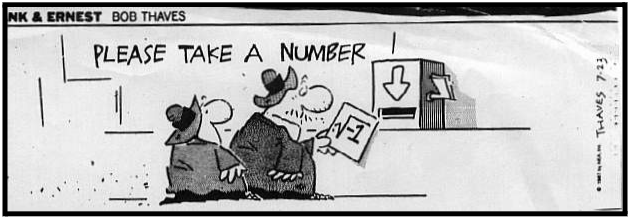Talking Big Ideas.
“The single biggest problem in communication
is the illusion that it has taken place.”
~ George Bernard Shaw
NOTE:
We use numbers all the time when we talk.
But how often do other people remember them? Most public speakers don’t use numbers effectively. We encourage all our clients to follow a simple heuristic:
Make sure every number you share is friendly to humans.
Whenever possible: cut, simplify, and compare.
Below is an updated version of a short essay I wrote in January 2022. It explains how you can apply this heuristic to ensure your numbers are friendly to your fellow humans.
Cheers!
Bob
***
Nobody truly understands numbers.
Nobody.
So argues Karla Starr and Chip Heath in their fantastic book Making Numbers Count. Starr is an award-winning science writer, and Heath is famous for helping people create powerful messaging that sticks.
Consider this: Most languages throughout history did not have any numbers bigger than 5. Our ancestors didn’t have a word for 6, let alone 6 billion. As Starr and Heath write:
Our brains evolved to deal with very small numbers. . . . mathematics is a blisteringly new piece of high-tech software strapped on top of a clunky piece of hardware. . . . our brains were designed to grok 1, 2, 3, 4, and 5. After that it’s just “lots.”
In addition to big numbers, we also don’t understand fractions, decimals, and percentages.
Try this quick experiment. Read the three numbers below. Then close your eyes and say each number out loud from memory:
- 3,948,583
- 17/33
- 3.0423
Now try the same experiment using these numbers:
- 4 million
- One half
- 3
The numbers are essentially the same. But the second version is built for humans. Our brains can understand and remember them.
Here’s a statistic Starr and Heath use that has four percentages: 34% of White applicants and 14% of Black applicants without criminal records received call backs on job applications, compared to 17% and 5% with records.
By removing the percentages we can highlight what matters most. And in doing so provide an immediate emotional punch:
White job applicants with felony records are more likely to receive a call back than Black job applicants with clean records.
If you can’t easily translate your complex numbers into a small whole number or a simple idea, consider a concrete visual or analogy.
For example, the nearest solar system to ours is about 23,514,501,000,000 miles away. That number is too big to understand. We could say it’s just over 4 light years away. But we really have no idea what a light year is.
Instead, imagine you’re standing on your old high school football field. You walk over to one endzone, reach into your pocket, and pull out a quarter. You drop it next to the goalpost. Then you walk across the field to the other goalpost and drop another quarter. If our solar system and the solar system closest to us were both shrunk to the size of quarters, that’s how far apart they would be.
Perhaps most impressive, placing a simple comparison next to a statistic will double how many people remember it.
For instance, I grew up in Ohio, a state that is 44,825 square miles. I can also put it this way: Ohio is about 45,000 square miles – the size of Maryland, New Jersey, and West Virginia combined.
Consider all the effort that goes into researching, writing, and promoting ideas where you work. Do each of the key statistics have simple comparisons? If they do, twice as many people will remember them.
Starr and Heath challenge us to translate every complex number we use into concepts our audiences will understand. Their theme can be summed up like this:
Make sure your numbers are friendly to humans.
And in less than 200 pages they give about 100 examples showing exactly how to do this. There are three principles to apply:
- Cut: Less is more. One number is better than several. One idea may be better than one number.
- Simplify: All fractions, decimals, percentages, and potentially confusing numbers.
- Compare: Create analogies and concrete visuals that intuitively make sense.
Just after Making Numbers Count was published, I noticed that the Bureau of Labor Statistics issued a news release on union membership. Here’s their opening paragraph:
In 2021, the number of wage and salary workers belonging to unions continued to decline (-241,000) to 14.0 million, and the percent who were members of unions–the union membership rate–was 10.3 percent, the U.S. Bureau of Labor Statistics reported today. The rate is down from 10.8 percent in 2020–when the rate increased due to a disproportionately large decline in the total number of nonunion workers compared with the decline in the number of union members. The 2021 unionization rate is the same as the 2019 rate of 10.3 percent. In 1983, the first year for which comparable union data are available, the union membership rate was 20.1 percent and there were 17.7 million union workers.
About halfway through reading that my eyes glazed over. And there were so many numbers I got confused. Here’s a tighter version I came up with by applying the three principles (cut, simplify, compare):
Today 1 in 10 American workers belong to a union. Four decades ago it was 2 in 10. Last year alone union membership decreased by 241,000 Americans – the equivalent of the population of Richmond, Virginia.
Whenever you have to share numbers, take a moment to cut, simplify, and compare. Doing so will make your numbers friendly to humans.




